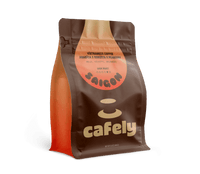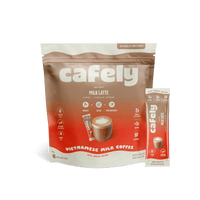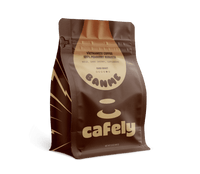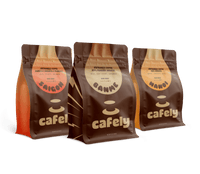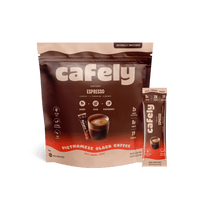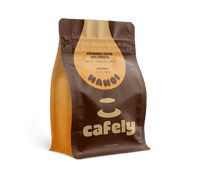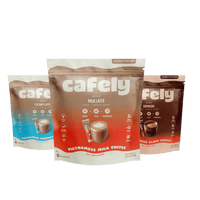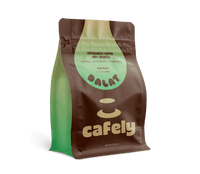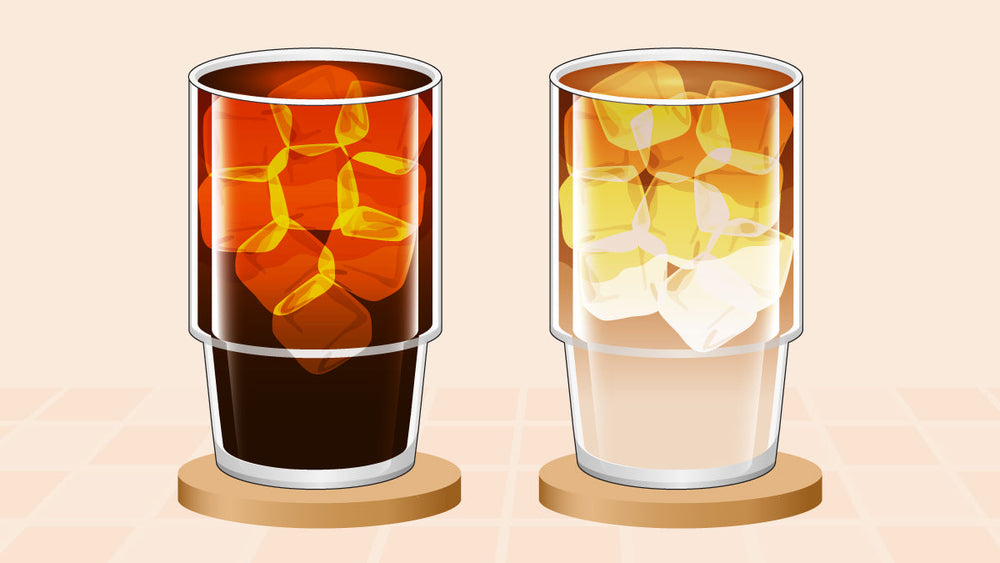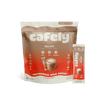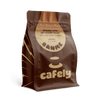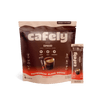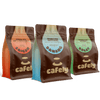It’s already summer season, and that means we all need a cold coffee drink, but it’s probably best if you’ve learned the difference between an iced coffee and an iced latte.
They’re not the same, and if you’re trying to pick the right one for your taste, caffeine needs, or nutrition goals, it helps to know the difference.
Here’s how to tell them apart, so you can make the better choice for yourself.
Main Difference Between Iced Coffee and Iced Latte
At first glance, a classic iced coffee and iced lattes might look alike, but the base, strength, and texture are very different.
Iced coffee is made by brewing regular coffee, usually drip, pour-over, or cold brew, and then chilling it over ice. Some people add milk or a sweetener, but it starts with brewed coffee as the main ingredient.
Iced lattes, on the other hand, start with a shot or two of espresso, then add a generous amount of cold milk and ice. Milk is essential to the drink, not optional.
So the key difference between iced coffee and iced latte comes down to this:
- Iced coffee — brewed coffee + ice (milk optional)
- Iced latte — espresso + cold milk + ice
You’ll often see iced coffee served black or with a splash of milk. Iced lattes arrive creamier, with a milk-forward look and taste.
Iced Coffee vs Iced Latte: Taste and Flavor Comparison

The flavor of these drinks is where the contrast shows up.
Iced coffee tends to taste stronger, bolder, and more bitter, especially if it’s made with dark roast beans or cold brew coffee. It keeps the bite of brewed coffee, with a more pronounced acidity and earthiness. It’s ideal for people who like rich, robust coffee flavor, especially those who take it black or with just a splash of milk.
Iced lattes are mellow, smooth, and milk-forward. The espresso is more concentrated, but the high milk content balances it out. You get a creamier mouthfeel with less bitterness. For anyone who enjoys a softer, sweeter drink or plans to add flavored syrup, an iced latte is often the better fit.
How Milk and Syrups Affect Flavor
Milk reduces acidity and softens harsh notes in espresso. That’s why iced lattes often feel easier on the palate. The more milk you add, the smoother the drink gets.
Flavored syrups like vanilla, caramel, or hazelnut can completely change the experience of either drink. In iced coffee, they mask bitterness and boost sweetness. In iced lattes, they blend into the milk for a dessert-like flavor.
If you’re craving something bold and refreshing, iced coffee is your go-to. If you’re after something creamy, smooth, and slightly indulgent, go for the iced latte.
Caffeine Content: Which Has More Kick?
If you’re choosing between an iced coffee and an iced latte for that much-needed energy boost, caffeine content is probably one of your top concerns. While both drinks are caffeinated, they don’t deliver it in the same way.
Espresso vs Brewed Coffee: What You’re Getting
Let’s start with how much caffeine is in each drink by volume.
- One shot of espresso (about 1 oz) contains roughly 63 mg of caffeine.
- Two shots (often standard in iced lattes) = 126 mg of caffeine.
- One 8-oz cup of brewed coffee typically ranges from 80 to 120 mg.
- Cold brew is usually more concentrated, with 150 to 250 mg per serving, depending on strength and size.
So if you order a medium iced latte with two shots of espresso, you’re probably getting around 120 to 130 mg of caffeine.
But if you’re sipping a 16-oz cold brew, you might be closer to 200 to 250 mg in one serving.
Which One Feels Stronger?
Even if iced coffee contains more caffeine, it doesn’t always feel that way.
Espresso has a concentrated kick, so even a small dose delivers noticeable alertness fast. But because an iced latte includes a large amount of milk, usually two-thirds of the drink, the espresso gets diluted. That makes it feel smoother, softer, and easier to sip.
Iced coffee, on the other hand, might not hit as hard in the first few sips, but it can pack more total caffeine per drink. Especially with cold brew or large servings, the caffeine adds up fast and can stay in your system longer.
So if you’re after a bold jolt of energy, go with iced coffee. But if you want something strong that tastes smooth and doesn’t feel harsh, an iced latte with two espresso shots still delivers a solid boost, just without the punchy bitterness.
Iced Coffee vs Iced Latte: Milk and Texture Differences
This is one of the biggest factors that separates iced coffee from iced lattes, especially for people who care about mouthfeel and drink customization.
Iced Coffee: Milk Optional, Texture Lighter
By default, iced coffee doesn’t include milk. It’s just brewed coffee, drip, cold brew, or pour-over, poured over ice. Some people enjoy it black, while others add a splash of milk, cream, or a milk alternative.
Even when milk is added, the texture of iced coffee remains light and watery, especially compared to the creamy, blended feel of an iced latte.
Because the milk isn’t frothed or steamed like it is in a hot latte, it doesn’t fully integrate. Instead, it floats and swirls, giving the drink a layered appearance. That’s why it still tastes more like coffee than milk.
Iced Latte: Milk Required, Texture Creamier
Milk is the main ingredient in an iced latte; it makes up at least two-thirds of the drink. That’s what gives iced lattes their rich, creamy texture and mellow flavor.
If you’re ordering from a café, most iced lattes use cold whole milk, oat milk, or almond milk, poured over freshly pulled espresso shots.
Because espresso is much more concentrated than drip coffee, the milk helps balance its intensity and smooth out the texture.
A typical iced latte contains:
- ⅓ espresso (1–2 shots)
- ⅔ cold milk
- Ice and optional syrup or sweetener
This formula creates a drink that’s creamier, more filling, and better suited for flavor customization.
Milk Options and Their Impact
The type of milk you choose also changes both texture and taste:
- Whole Milk: Creamiest texture, slightly sweet, most indulgent
- Skim Milk: Lighter, thinner, less creamy
- Oat Milk: Creamy, nutty flavor, great for texture, and dairy-free diets
- Almond Milk: Thin and slightly nutty, can separate if not well-mixed
- Soy Milk: Rich but sometimes grainy; works well with espresso
- Coconut Milk: Adds a tropical twist, but is thinner and sweeter
For the best texture in an iced latte, oat milk or whole milk often performs the best, smooth, rich, and foams well when needed. For iced coffee, a splash of any milk can mellow out the bitterness without changing the overall mouthfeel much.
Iced Coffee vs Iced Latte: Which Is Healthier?
Health-wise, both drinks can fit into a balanced routine, but they’re not equal in calories, sugar, or fat.
Iced Coffee: Lower in Calories (Especially When Served Black)
Plain iced coffee, black with no milk or sugar, has virtually no calories. If you add a splash of milk or sweetener, it’ll go up slightly, but not dramatically.
Here’s a quick snapshot of calories in coffee:
- Black Iced Coffee (8 oz): 2–5 calories
- With 1 oz Whole Milk: +15–20 calories
- With Flavored Syrup (1 pump): +20–25 calories
- With 2 tbsp Cream and Syrup: Up to 80–100 calories
If you're watching your sugar or fat intake, skip the cream and syrups, or swap them for a sugar-free alternative. You’ll still get a bold coffee flavor with much fewer calories.
Iced Latte: Higher in Calories Due to Milk
Since iced lattes are made mostly with milk, they naturally contain more calories, fat, and sugar than iced coffee, especially if sweetened.
Let’s look at an average 16-oz iced latte made with two shots of espresso:
- With Whole Milk: 190 to 220 calories
- With Skim Milk: 130 to 150 calories
- With Oat Milk: 160 to 190 calories
- With Almond Milk (unsweetened): 100 to 130 calories
- With Flavored Syrup (2 pumps): Add 40 to 50 calories
So, if you’re ordering a large iced latte with regular milk and syrup, your drink might easily exceed 250 calories.
How To Make Either Drink Healthier
Here are a few easy tweaks if you want to cut sugar or calories in either drink:
- Choose unsweetened milk alternatives (like almond or oat)
- Skip the flavored syrups or choose sugar-free versions
- Ask for fewer pumps (1 instead of 3 can cut up to 50 calories)
- Brew at home so you can control what goes in
- Use ice made from coffee to avoid dilution without adding calories
If your goal is low-calorie and high-caffeine, iced coffee is a better choice. But if you want a satisfying treat with a smooth texture, iced lattes can still work, just be mindful of the milk and syrup choices.
Best Times to Drink Iced Coffee or Iced Latte

Some moments call for a bold boost. Others need a smoother sip. Here’s when each iced drink works best.
Best Time to Drink Iced Coffee
If you want to wake up quickly, go for iced coffee. It’s strong, straightforward, and hits fast, especially if you use cold brew or a bold drip method. Most people drink coffee earlier in the day, when higher caffeine isn’t a problem.
That makes iced coffee ideal for:
- Early shifts
- Morning workouts
- Long drives or commutes
- Studying or working through the morning
Cold brew is a great pick here because it’s smooth but still strong. And if you use high-caffeine beans like BanMe Coffee (100% peaberry robusta), you’ll get even more lift. Robusta beans naturally pack more caffeine, and peaberry adds extra strength and density.
Hot weather makes iced coffee even more appealing. On a summer morning, a chilled brew gives you the energy you need without the heat of a regular cup.
Best Time to Drink an Iced Latte
Iced lattes shine later in the day. The espresso gives you focus, but the milk smooths it out so it doesn’t feel too intense. That’s exactly what you want when you’re low on energy but don’t want to overdo it.
Try an iced latte when:
- You’re heading into an afternoon meeting
- You need a gentle pick-me-up
- You’ve already had coffee earlier
- You’re craving something rich but not sugary
The milk adds fullness, so iced lattes also feel more like a treat. That makes them a good option when you’re trying to avoid snacks but still want something indulgent. And if you’re using Cafely’s Espresso Blend, you’ll get a smooth, café-style latte with no bitterness, even if you skip the sweeteners.
If you want something deeper, SaiGon OG gives you more complexity. It blends robusta, arabica, and peaberry beans and is roasted using clarified butter. That adds body and a touch of caramel, which holds up perfectly in oat or almond milk.
Best Coffee Beans for Iced Coffee vs Iced Latte
Your beans make or break your iced drink. The roast, the type, and even the blend affect flavor, texture, and strength. Let’s look at the best beans for each.
Best Coffee Beans for Iced Coffee
Iced coffee needs power. Once you add ice, the flavor thins out. So you need beans that hold up, even when cold and diluted.
That’s where Cafely’s Signature Dark Roast works best. It’s bold, chocolatey, and designed to stay strong after brewing. Whether you’re using a French press, cold brew bottle, or just brewing extra-strong drip, this roast keeps its flavor over ice.
If you want more caffeine per ounce, we recommend trying Cafely BanMe Coffee. It’s 100% peaberry robusta. That means it’s low-acid, high in caffeine, and naturally intense. You’ll get a deeper, more bitter brew with an earthier finish. That makes it perfect for cold brew or double-strength iced coffee.
Use a 2x grounds-to-water ratio for stronger iced coffee. You’ll need that extra intensity once ice and milk hit your cup.
Best Coffee Beans for Iced Lattes
Iced lattes are all about balance. The espresso needs to stand out, but not overpower the milk. That’s why medium to medium-dark espresso blends work better than lighter roasts.
Cafely Espresso Blend was made for this. It’s smooth, rich, and designed for milk-based drinks. It pulls a balanced shot with light acidity and natural sweetness. Great with dairy, almond, or oat milk.
For something stronger, use HaNoi Coffee 100% robusta. It’s bold, dark, and full-bodied. The deep roast brings out malt, cocoa, and earthy notes. Even with milk, you’ll taste the coffee. No need to drown it in syrup.
And if you want something more layered, Cafely SaiGon OG brings a unique blend of arabica, robusta, and peaberry beans. The clarified butter roasting method gives it extra richness and caramelized sweetness. It blends beautifully with milk and makes your iced latte feel indulgent, not basic.
FAQs: Iced Coffee vs Iced Latte
Here are clear, fact-based answers to help you compare both drinks.
1. Is Iced Coffee Stronger Than An Iced Latte?
Not always. Iced coffee has more caffeine by volume, but iced lattes use espresso, which is more concentrated.
2. What's The Difference Between Iced Coffee And Iced Latte At Dunkin'?
Dunkin’ Donuts’ iced coffee is brewed coffee over ice. Iced lattes are made with espresso, milk, and ice.
3. What Is A Dunkalatte?
A Dunkalatte is a Dunkin’ iced latte. It’s usually flavored with syrups or sweetened milk.
4. Which Iced Coffee Is Stronger?

Cold brew is typically the strongest iced coffee, with more caffeine than other cold coffee drinks.
5. Why Is A Latte More Expensive Than Coffee?
Lattes use espresso and more milk. That increases ingredient costs and prep time.
6. What Kind Of Coffee Has The Highest Caffeine Content?
Cold brew concentrate and espresso made with robusta beans have the highest caffeine.
7. Why Do Iced Lattes Have So Much Sugar?
Many iced lattes are flavored with syrups or made using sweetened milk, which adds sugar.
8. Who Drinks The Most Iced Coffee?
Younger adults, especially Gen Z, are among the biggest consumers of iced coffee.
9. Which Is Healthier, Iced Coffee Or Latte?
Iced coffee is usually healthier, especially if you skip milk and add sugar.
10. How Is A Flat White Different From A Latte?
A flat white has less milk and more microfoam, giving it a stronger coffee flavor and creamier texture.
